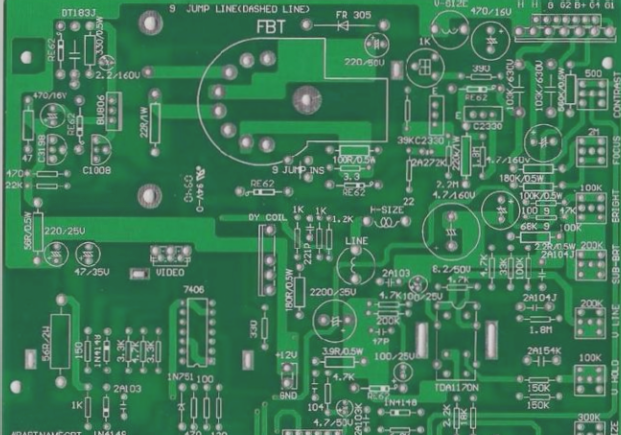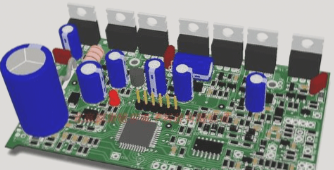Screen printing is commonly employed in the processing of FPC (Flexible Printed Circuit) boards. It is typically used for printing single-sided printed circuit boards, while the number of printed double-sided boards is relatively low. However, there is a significant volume of double-sided rigid circuit boards that require printing.
In the processing of FPC flexible circuit boards, screen printing is predominantly utilized. It is frequently applied for single-sided printed circuit boards. The production of double-sided boards is less common, but double-sided rigid circuit boards are printed in much larger quantities. To ensure quality during the processing, it is essential to address key considerations when screen printing double-sided FPC flexible circuit boards using carbon ink as the conductive medium.
1. Key considerations in the screen printing process for upper double-sided flexible circuit boards
Before beginning the screen printing process, select the appropriate materials and pre-bake them. This step is crucial to prevent shrinkage and deformation during printing. Failure to do so can lead to numerous issues in subsequent processing stages, ultimately affecting the quality of the screen printing.
—
Let me know if you need any more adjustments!

1. To meet design requirements, certain double-sided flexible circuit boards necessitate high dimensional precision. We can designate these as circuit A to differentiate them from the lower-layer circuit B. Typically, carbon ink materials are utilized for screen printing on the A-side circuit. During the screen printing process, it is crucial to control the ink thickness. Once the ink thickness aligns with design specifications, the resistance parameters of the entire circuit can also be satisfied, ensuring proper functionality in the future.
2. **Precautions for Screen Printing Lower-Layer Circuits**
During the screen printing process, it is essential to use the positioning hole as a reference, and the lower layer circuit should be printed on the side that has not undergone screen printing. As noted earlier, the drape faces the B side, so once screen printing is completed, the drape should also be covered. Following screen printing, the ink exhibits significant fluidity due to gravity, allowing the carbon ink to easily fill the carbon holes, ensuring a solid connection with the upper circuit. This facilitates effective conduction between the A and B sides. However, if the drape faces the A side, the ink will flow onto the A side lines through the carbon filling hole during the screen printing of the B side. By setting the height of the drape to h, the ink can be prevented from flowing forward, hindering effective communication with layer A. In such cases, the conduction between the A-layer and B-layer lines becomes virtually impossible.
The fluidity of the screen printing conductive ink is vital for the effectiveness of the carbon filling holes. Generally, the inks used tend to be relatively viscous, resulting in poor actual fluidity, which decreases the likelihood of upper and lower line connections. When using machine printing, employing a vacuum suction device on the workbench can enhance the fluidity of the conductive ink. However, this approach has a downside: if a significant amount of ink remains on the workbench after operation and is not promptly cleaned, it can degrade the circuit quality. In manual printing, where no vacuum suction device is utilized, the circuit board should be allowed to rest for a period after screen printing, followed by drying in an oven. This ensures that the ink flows adequately, facilitating a proper connection between the upper and lower circuits. Nevertheless, careful control of ink thickness during screen printing is essential to ensure the circuit’s resistance value aligns with design specifications.
Upon completing these tasks, the final stamping operation must be executed, along with an inspection of the FPC product. Depending on the circuit board’s intended use, it must adhere to the designed outline dimensions during stamping. Ultimately, the circuit undergoes testing to ensure there are no short circuit issues. If the detected resistance values meet design requirements and all aspects are satisfactory, the double-sided FPC screen printing is considered successful. Addressing the challenges in the screen printing of double-sided flexible circuit boards requires effective solutions to uphold processing quality. Given the variability in materials, design forms, and usage conditions, technicians must collaborate, integrate knowledge, propose effective problem-solving methods, optimize production techniques, and timely incorporate new technologies. This will enhance the quality of China’s double-sided flexible circuit board screen printing technology and strengthen its position in international competition.
—
Feel free to reach out if you need further adjustments or additional content!



